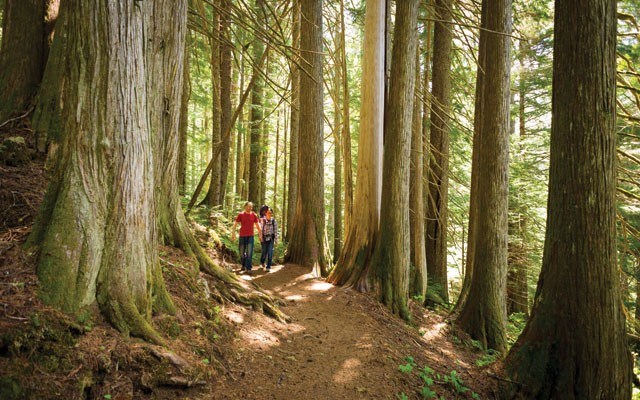The Resort Municipality of Whistler (RMOW) was recognized by the provincial government this month for achieving carbon neutrality in 2014.
In a recent letter from the province, the RMOW was awarded Level 3 recognition — "Achievement of Carbon Neutrality" — as part of the Green Communities Committee's Climate Action Recognition Program, a joint initiative between Victoria and the Union of British Columbia Municipalities.
While Whistler's greenhouse gas (GHG) emissions rose by one per cent in 2014, according to a municipal report, the finalization of an agreement between the province and the Cheakamus Community Forest (CCF) this spring to sell carbon credits allowed the community to offset its emissions from last year.
"Because we knew that the Cheakamus Community Forest was developing a carbon credit offset program, we elected to delay purchasing the offsets until the program was finalized... and that got us carbon neutrality," explained Mayor Nancy Wilhelm-Morden.
A carbon offset is a credit for GHG reductions achieved by one party that can be used to compensate, or offset, the emissions of another party.
The sale of carbon offsets aligns with the CCF's Ecosystem-Based Management (EBM) Plan, which emphasizes the health and protection of the entire forest ecosystem and employs techniques like harvest rotations, reduced harvest volumes and protection of old-growth forests and wildlife habitats.
Under the EBM, the annual allowable cut of the CCF was set at around 20,000 cubic metres per year as opposed to the industry standard 41,170 cubic metres in anticipation of the carbon program's eventual approval. It now sits at 21,000m3.
"The reality is that when the community forest was created ... we had already planned on doing a carbon program and so they got the cut set low from the beginning," said CCF board chair Jeff Fisher.
The five-year process could prove "a challenge" for the CCF's public messaging, according to Association of Whistler Area Residents for the Environment (AWARE) president Claire Ruddy, who said the community will likely expect the annual cut to be lowered further now that carbon credits can be sold.
"When we initially started talking to (the CCF) about carbon offsets, we were asking the question, 'When you start selling carbon credits, are you going to reduce the cut (from 21,000 m3)?' Isn't the idea here to show that we can make better revenues from selling local B.C. carbon credits that leave our forests standing that align with the values of British Columbians?" she said. "Because it's been a long process getting the carbon credit accreditation, I think now (the CCF) has a challenge with this communication gap."
Even with the credit program now in place, Wilhelm-Morden said it's important that residents do their part in reducing GHG emissions and energy consumption, especially with the resort no longer on pace to meet its long-term sustainability goals established in the Whistler2020 plan.
"That's part of the issue I have with carbon credits: it doesn't change behaviour, and that's ultimately what has to happen," she added.
Whistler has achieved a 17-per-cent reduction in GHG emissions since 2007, largely due to large-scale infrastructural projects, such as better landfill management and greater organics recycling. Many of those reductions, however, were the result of major one-time changes, such as the community's conversion from piped propane to natural gas. A July municipal report concluded that "it is unlikely that community emissions will remain on target to achieve the adopted 2020 target levels included in Whistler's Official Community Plan made up of emissions from stationary sources like buildings or infrastructure systems, mobile sources like passenger vehicles, fleets and transit, and emissions from landfills."
Passenger vehicles make up the largest share of Whistler's emissions at 57 per cent, while natural gas consumption represents a third of total emissions — trends that will likely only be exacerbated by Whistler's growing visitor numbers.
"We can make improvements, absolutely, and the fact that GHG (emissions) went up from 2013 is again an indicator of just the numbers of guests that we have," Wilhelm-Morden said. "They're increasing year over year, so that's unfortunately going to have a negative impact on the community's performance as far as GHG emissions."




